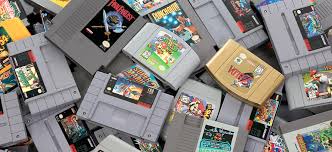Game Economies: What Virtual Worlds Can Teach Us About Real-World Finance
Video games are often celebrated for their stories, graphics, and gameplay mechanics. But one of the most fascinating—and often overlooked—features is how they simulate economic systems. From bartering and inflation to supply chains and digital currencies, games have become surprisingly rich platforms for exploring financial principles.
Let’s dive into how game economies mirror real-world finance, and why players often become smarter about money without even realizing it.
Simulated Markets and Player Behavior
In many games, players interact with virtual economies governed by the same forces as real markets: supply and demand, scarcity, speculation, and even taxation. Massive multiplayer online games (MMOs) like World of Warcraft or EVE Online feature open markets where items are traded, prices fluctuate, and wealth accumulates—or collapses.
These systems often develop organically, with players creating businesses, manipulating prices, and even forming monopolies. It’s not uncommon for in-game economists to study these trends—and for real-world researchers to use them as case studies in behavioral economics.
Platforms with reward loops and trade mechanics, including lighter ones like livo88, also mimic these dynamics in simplified but recognizable ways, engaging players through value decisions and outcome-based risk-taking.
Risk, Reward, and Decision-Making
Many games require players to make financial choices under uncertain conditions—buying upgrades, saving for better equipment, investing in property, or taking calculated risks. These mechanics train players to evaluate short-term gains against long-term returns, not unlike real-world budgeting or investing.
Games like Stardew Valley teach players how reinvestment can grow profits, while The Sims introduces basic home economy concepts such as utility costs and career progression. Even arcade-style games offer economic principles when players must manage resources, unlock features, or weigh rewards versus time.
Inflation and Currency Control
In long-running games, developers must constantly monitor inflation within the in-game economy. If too much currency is introduced (through quests or glitches), prices skyrocket, and older players gain massive advantages.
To address this, developers implement “gold sinks” (like expensive repairs or cosmetic items) to remove excess currency and maintain balance—a concept that echoes real-world central banking and monetary policy.
Understanding these systems—even at a surface level—teaches players how money supply and inflation work in practice.
The Rise of Virtual Goods and Real Value
Some games blur the line between in-game and real-world economies. Players now buy, sell, and trade digital goods for real money—think Counter-Strike: Global Offensive skins, Diablo III’s auction house (now defunct), or NFT-based game assets.
This crossover has created entirely new career paths and industries, from professional gaming and in-game item trading to game-focused financial consulting.
While the ethical and economic implications are still being debated, the reality is clear: virtual assets now carry real-world value, and players who understand that are ahead of the curve.
Conclusion
Whether you’re flipping swords on an MMO auction house or unlocking digital bonuses on a site like livo88, you’re participating in a form of economic play that reflects real-world systems. Games have become unexpected but powerful tools for learning financial strategy, understanding risk, and navigating value in a digital age.
The next time you calculate the ROI of buying a virtual upgrade, remember—you might be building financial instincts that go well beyond the screen.








